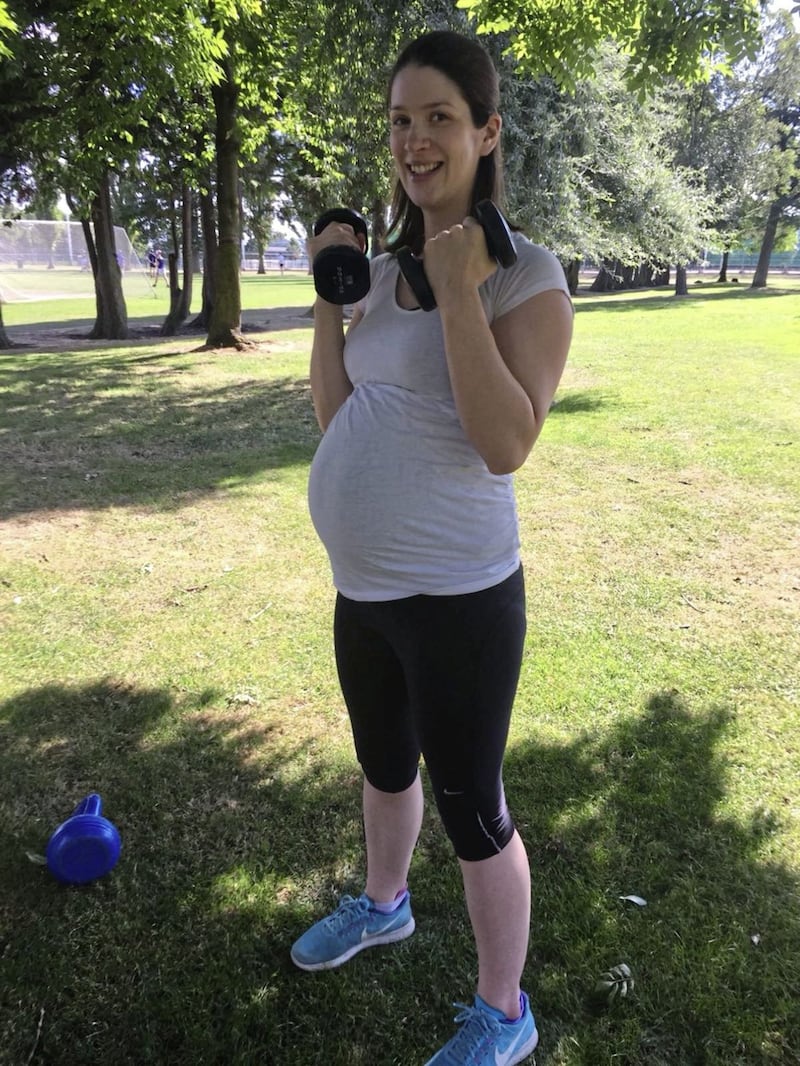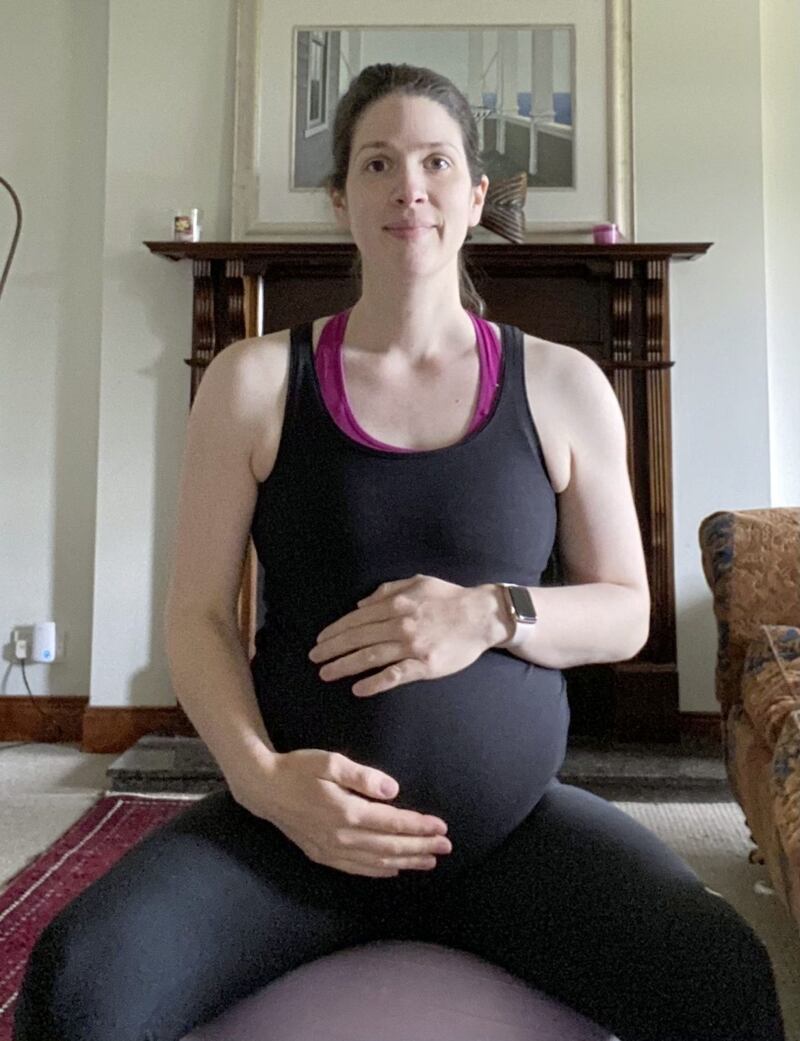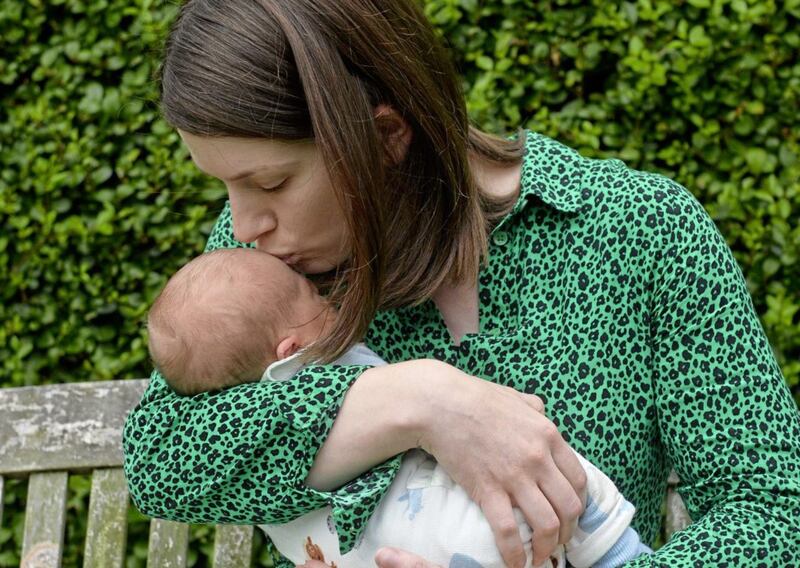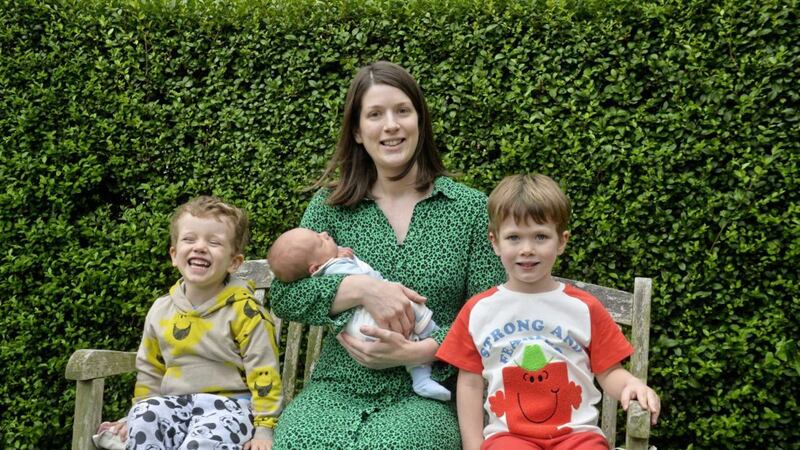UP UNTIL a week before the recent birth of her third child, south Belfast academic Medbh Hillyard was still doing weights, cardio and general strength training, along with daily walks, of course.
It’s a far cry from the ‘eating for two, putting your feet up’ myth that Medbh believes needs to be dispelled, if we are to normalise physical activity in pregnancy and enhance physical and mental wellbeing.
The 34-year-old is speaking not just from personal experience but from an informed, research-based position.
Mum to three boys – Rory (5), Finn (3) and Rowan (three weeks) – Medbh graduated from Ulster University School of Nursing this summer with a PhD on physical activity in pregnancy, with particular emphasis on women with gestational diabetes.
She has also recently joined the scientific advisory board for newly formed charity, the Active Pregnancy Foundation. Its mission is to support women to stay active throughout pregnancy and beyond, by providing expertise and advice, changing culture and challenging policy.

Medbh had yet to embark on her own pregnancy journey when she began the PhD, but becoming a mum over the course of the five years gave her a unique insight and empathy with the women she interviewed.
As part of her research, she spoke to a number of mums-to-be with gestational diabetes, a type which develops during pregnancy ad leads to high blood sugar levels.
Exercise is one of the ways in which it can be controlled and Medbh’s work involved designing a physical activity intervention.
“Gestational diabetes is similar to Type 2 diabetes in that it’s on the rise, and it affects around 10 per cent of women,” she explains.
“Physical activity in pregnancy has numerous benefits for both mother and baby and there are additional benefits for women with gestational diabetes.
“However, despite these benefits, physical activity levels in pregnancy remain low.
“There is a lack of evidence on what frequency, intensity, time and type of physical activity can have the greatest benefit for women with gestational diabetes, which led me to this PhD topic.”
One common theme among the women she spoke to was uncertainty about how much and what type of exercise was safe during this important, and often unprecedented, period in their lives.
They were feelings which resonated with her own when she was expecting her first child.
“All of a sudden I had gone from being a very active person to being pregnant and not being sure what I should or shouldn’t be doing and being worried about the safety of my baby,” she recalls.
“There was also a stigma attached to being active in pregnancy. If people saw you being active, they almost looked at you as if to say ‘you shouldn’t be doing that’.
“I struggled with being active during my first pregnancy – it was very much low-impact exercise such as swimming and yoga.
“It was only during my second pregnancy when I met a personal trainer, a brilliant woman called Aimee Oliver who runs Portadown company Bodyfit Mums and is qualified in pregnancy exercise, that I found my way.”

Medbh says the difference in the pregnancies was “amazing”, with no aches and pains, more energy and better sleep when she was exercising regularly.
She also believes women are bombarded with “mixed messages” on exercise during pregnancy, depending on who they ask.
“What we find at the moment is that a lot of women who want to be active go to the gym and are turned away from classes, because the instructor doesn’t have the prenatal qualification,” she says.
“They might be told ‘talk to your midwife’ but the midwife may not have the expertise and will advise them to speak to their personal trainer.
“So women find themselves in this space where no one is quite sure who should be advising them.
“One thing that came through too from the interviews was that the women weren’t having discussions with healthcare professionals around activity in pregnancy, despite the benefits, especially for this group with gestational diabetes.”
The apparent lack of clarity and consistency is also despite separate Department of Health guidelines for physical activity in pregnancy being published for the first time in 2017, recommending 150 minutes of moderate exercise per week.
“Women are becoming more aware of these guidelines but more needs to be done to reassure them that exercise is safe,” adds Medbh.
“During my most recent pregnancy I didn’t have a conversation with anyone around physical activity. I don’t think it’s been raised in any of my pregnancies so you can’t put it down to the pandemic.
“I think there’s a number of barriers – for pregnant women in general – to being active in pregnancy. One is the stigma, with the attitude, often from older relatives, that you should be taking it easy.
“There is definitely a need to normalise activity in pregnancy and also greater advice needs to be provided not just to mums but also to fitness and healthcare professionals.”

Meanwhile, in another piece of research last summer, Medbh conducted an online survey of 553 women. She found that, pre-pandemic, 47 per cent were meeting the exercise guidelines but that number dropped to just 23 per cent during the pandemic.
The most commonly cited reason was fear of leaving the house due to Covid.
The results from Medbh’s research were included in the 2020 Director of Public Health report for Northern Ireland and are also due to be published in a peer reviewed journal later this month.
Medbh, who is slowly building up her activity following her Caesarean section, intends returning to the Bodyfit postnatal programme as soon as she is fully recovered.
“The main advice is ‘don’t bump the bump’. Contact sports aren’t recommended but apart from that, you can do pretty much anything,” she explains.
“You just need to adapt as you progress through your pregnancy. If something feels good, keep going.
“The mental health benefits of exercise are also huge, especially in pregnancy, and even more so during the pandemic.
“The Active Pregnancy Foundation have made little videos which they are trying to get into different maternity units, which women could watch while they are wating for an appointment.”
Medbh points out that the charity’s website has links to different approved workouts, which can be done at home without the worry of leaving the house or having to arrange childcare.
“These are free resources – but it’s just about women knowing they are there,” she adds.
As well as advising the charity, Medbh has been documenting her activity on Instagram @active_motherhood, to give other women the confidence to be active during their pregnancy and postnatally.
She intends continuing her research, focusing on pregnancy and the postnatal period, and is clear about what needs to happen next.
“Since I started my PhD there has been a lot of progress, but the next step needs to be translating policy and guidelines into actual practice, and that means having the conversation around exercise in pregnancy.”








